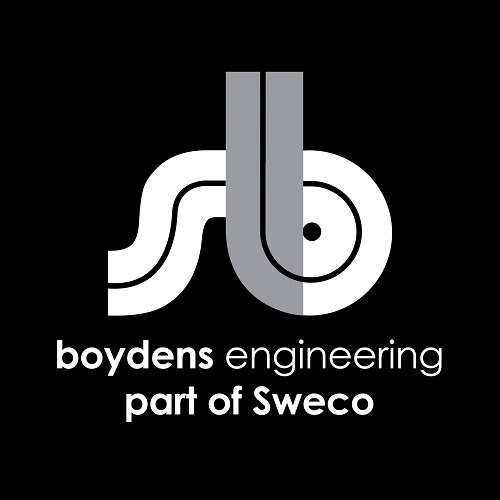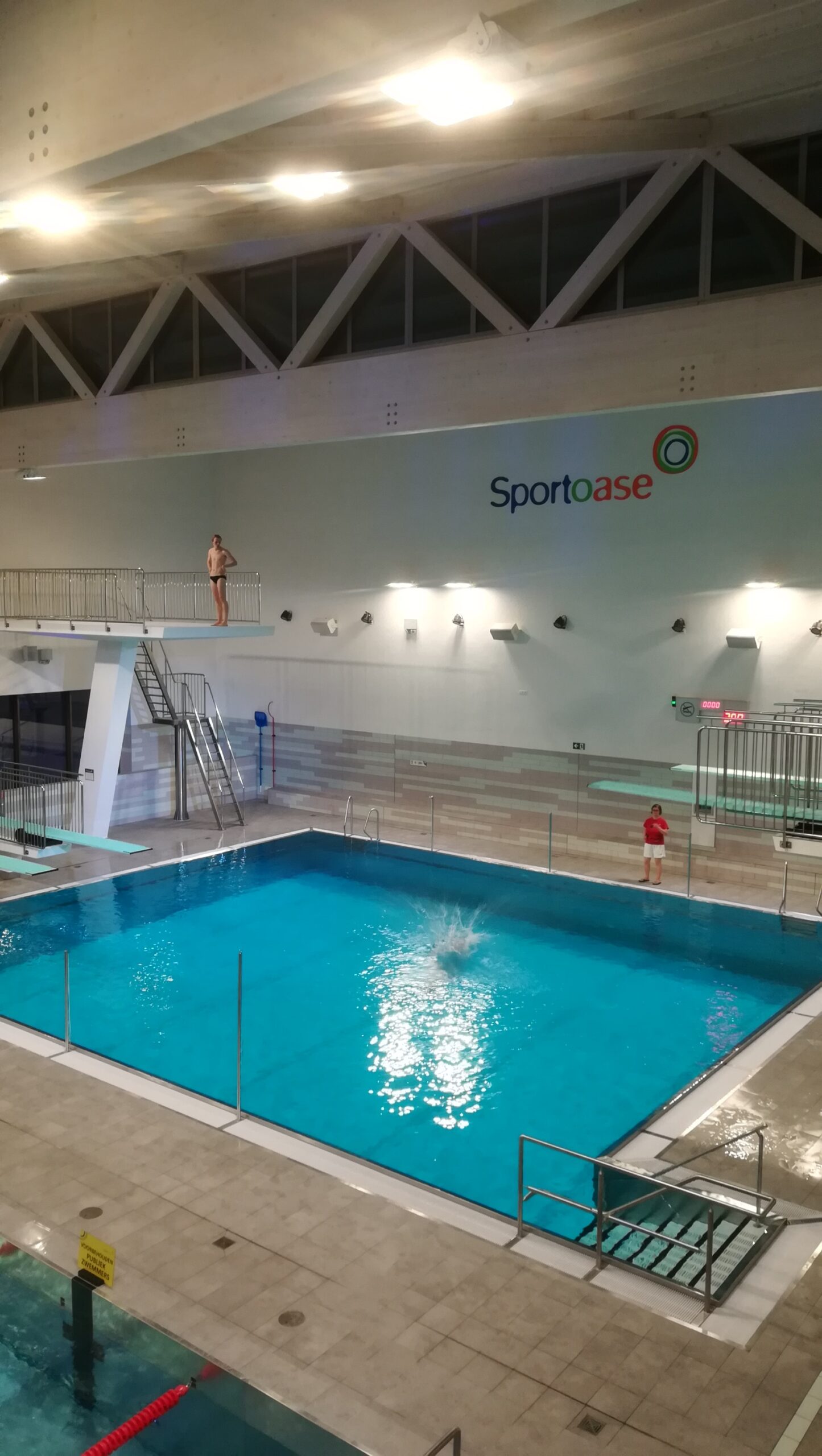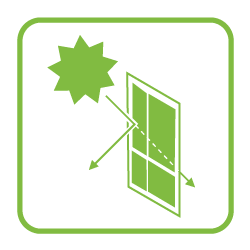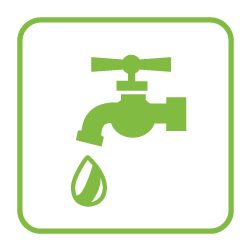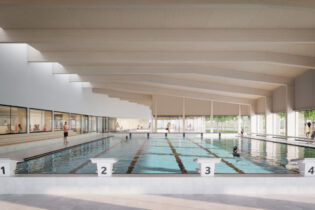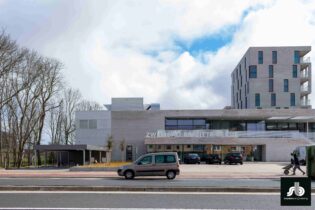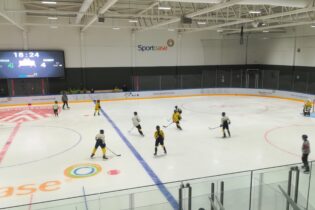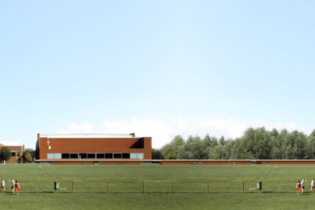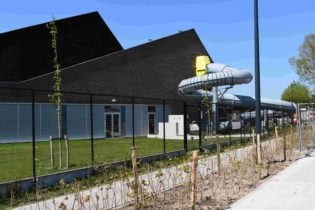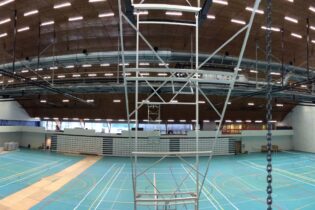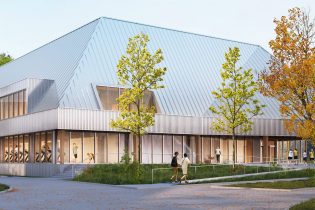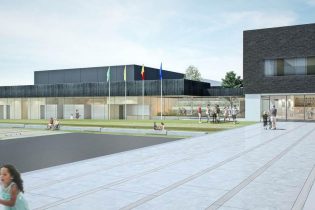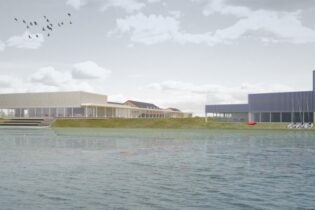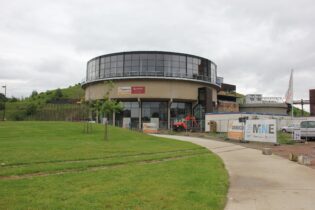‘Groot Schijn’ recreational swimming complex
Deurne, Belgium, Europe
| Total technical installations cost: | ± € 5.000.000,00 excl. VAT |
| Total construction cost: | ± € 16.000.000,00 excl. VAT |
| K Level / Energy class : | – |
| E Level: | 48 |
| Certification: | – |
Project description:
The recreational swimming complex ‘Groot Schijn’ is located in Deurne, on the eastern outskirts of the city, in the middle of the greenery of park ‘Ruggeveld’. With its sports and competition pool of 25 meters offering 8 practice and 6 competition lanes and its fun zone with spray park, wave pool, slides and water rapids, it is an extra asset for Antwerp’s tourism. In addition, there is an instruction pool with a high diving installation, a grandstand and a movable floor to -3.8 meters. On the second floor there is an outdoor terrace with two outdoor pools, enclosed by a sunbathing area.
The entrance to the sports complex is open and inviting and consists of a covered volume with multiple levels and stairs. There are slender columns and a glass roof which enhances the lively and open atmosphere. The wooden wall cladding in horizontal strips rhymes with the green surroundings, and the strategic placement of façade openings creates optimal daylighting, internal visibility, contact with the outside environment and the necessary privacy. The shell meets contemporary standards and is acoustically and thermally optimized.
Boydens engineering was responsible for the design and site monitoring of the mechanical, electrical and sanitary installations in coordination with swimming pool technology required for the safe, comfortable and environmentally friendly operation of this modern swimming pool complex. In addition, sustainable advice was provided throughout the various design stages: feasibility study, EPB reporting, construction contracts, etc.
By carefully studying heating, ventilation, cooling and lighting, an optimal balance could be found between implementing new technological developments and limiting the energy costs and ecological footprint of the building complex.
The main energy demand for a swimming pool complex consists of heat and electricity.
The aim is to rely on renewable energy generation on the one hand and on the other hand to recover as much energy as possible from discharged energy to reduce CO2 emissions.
The renewable energy generation is done by:
– Well-considered positioning, orientation of windows in order to optimize daylight penetration
– Air-water heat pump installations
– Photovoltaic panels (PV)
– Possibility of installing solar collectors
– Rainwater recuperation
– Recuperation of discharged rinse/waste water that is upgraded to supplemental water (UF/RO)
– Recovery of heat from comfort and system cooling
– Recuperation of waste heat from the ice rink
Air quality is guaranteed by air groups with high-performance energy recovery, with additional recovery by means of a heat pump for the swimming pools. Variable air flow rates are used to match the use of the various rooms.
Via booster heat pumps, hot water is produced centrally for the entire building complex.
The sustainable character of the installation was even extended to the water treatment circuits, where a system of ultra-filtration and reverse osmosis recovers up to 80% of the hot rinse water.
In addition, the best available technology was used as much as possible in various areas. For example, a salt electrolysis system was installed so that the supply of dangerous chemical products could be avoided and chlorine could be produced in situ according to need.
The toilets were equipped with automatic urinal flushing, self-closing and water-saving faucets and a rainwater recovery system to reduce precious city water.
A good sports lighting system must provide sufficient brightness, appropriate light intensity, uniform light distribution and adequate glare control for the activities in question. In swimming pools, artificial lighting is essential for maintaining safe swimming conditions and provides longer sporting hours in outdoor pools.
An advanced building management system (BMS) allows the installations to be easily set up, managed and monitored remotely.
